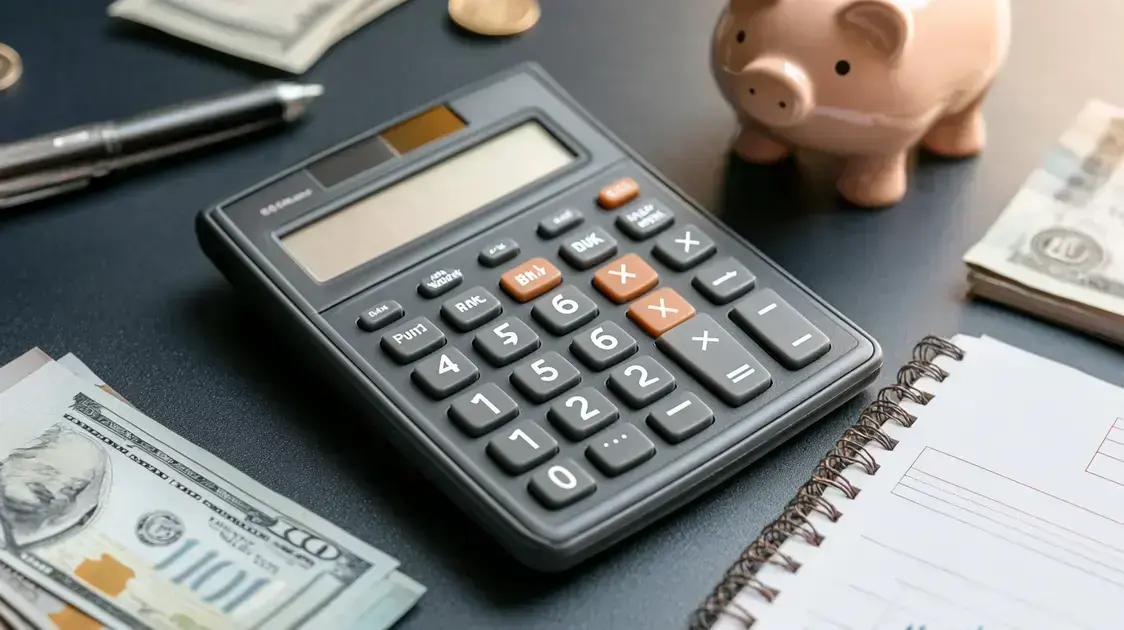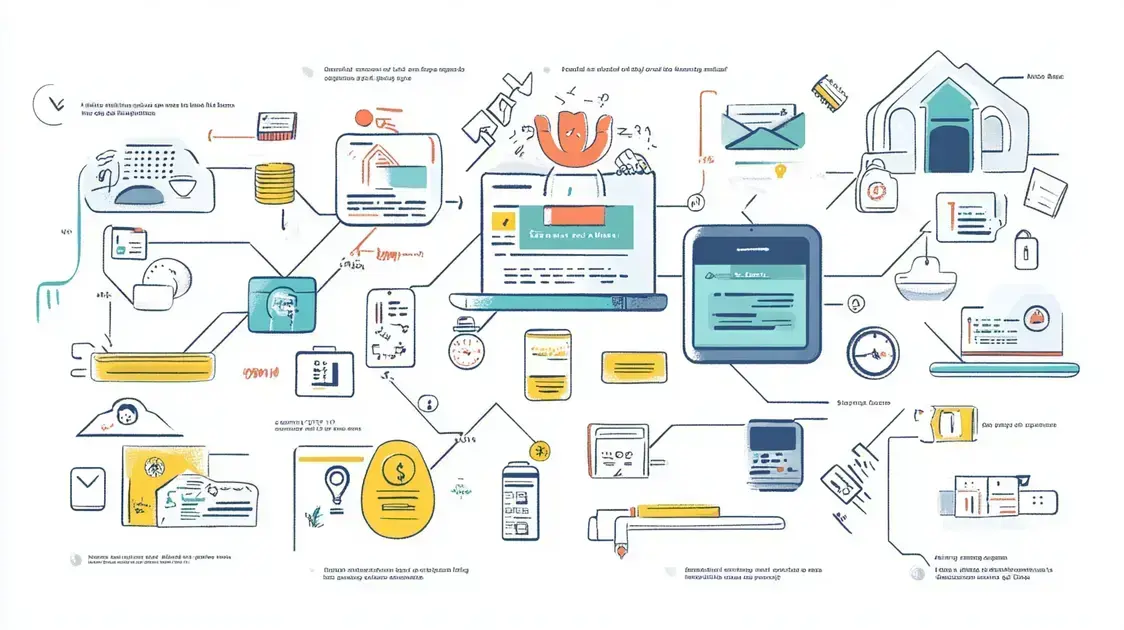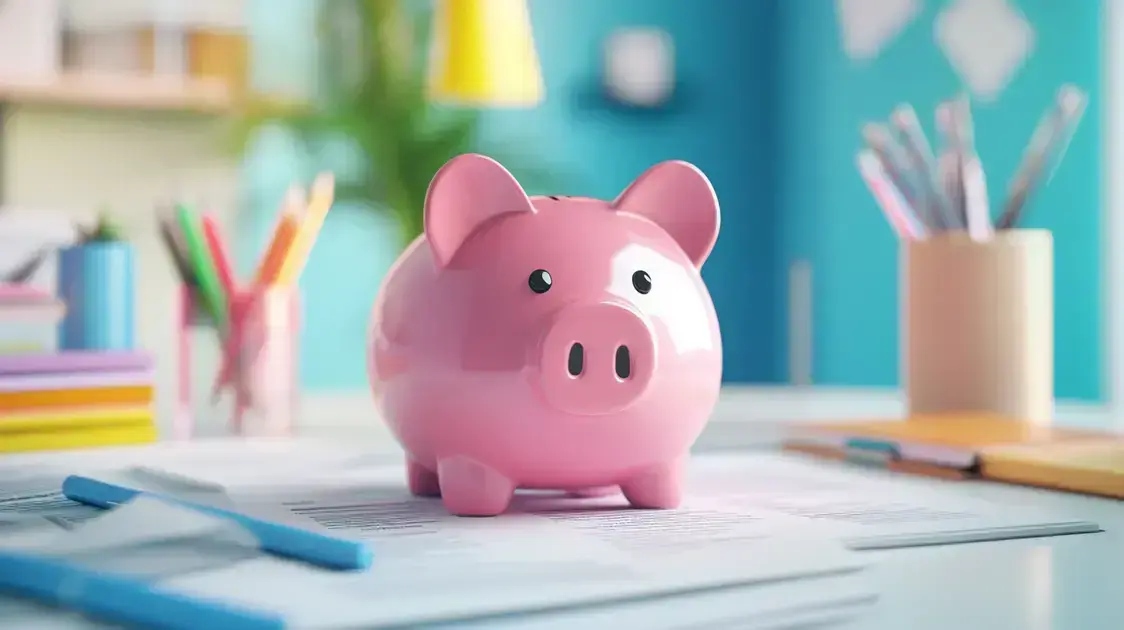Índice
Building an Emergency Fund is essential for financial stability. Life is unpredictable, and unexpected expenses like medical bills, car repairs, or job loss can arise at any time. Having a dedicated fund helps you cover these costs without relying on credit or loans.
One of the key benefits of building an emergency fund is peace of mind. Knowing you have a financial cushion allows you to handle emergencies without stress. A well-planned fund can prevent financial setbacks and keep you on track toward your long-term goals.
If you haven’t started building an emergency fund, now is the time. Discover how to set savings goals, create a realistic plan, and grow your fund effectively. Keep reading for practical tips to secure your financial future!
Understanding Emergency Funds
Building an emergency fund is essential for protecting yourself against unexpected financial challenges. Medical bills, car repairs, or urgent home expenses can arise at any time, and having a dedicated fund ensures you can cover these costs without resorting to debt.
An emergency fund acts as a financial cushion, helping you stay prepared for sudden expenses. The key to building an emergency fund is ensuring it is easily accessible while being kept separate from everyday spending. Experts recommend saving at least three to six months’ worth of essential expenses.
Understanding the importance of building an emergency fund is crucial for long-term financial security. Emergencies are unpredictable, and having savings readily available allows you to handle them confidently without disrupting your financial plans.
One of the biggest benefits of building an emergency fund is avoiding reliance on credit cards or loans. Instead of accumulating high-interest debt, you can use your savings to manage financial setbacks smoothly, maintaining stability even in difficult times.
By prioritizing building an emergency fund, you create a strong financial foundation. These funds provide peace of mind and security, ensuring that you can navigate unexpected expenses with confidence and remain financially independent.
Why You Need an Emergency Fund
Understanding why you need an emergency fund is vital for financial health. Life’s uncertainties can bring about unexpected costs that can impact your financial situation significantly. Having an emergency fund allows you to handle these costs without stress.
Protection Against Unexpected Expenses
An emergency fund provides a buffer against unexpected expenses, such as medical bills, home repairs, or job loss. Without a dedicated fund, you may have to rely on credit cards or loans, which can lead to debt and financial instability.
Peace of Mind
Knowing you have an emergency fund offers peace of mind. It reduces anxiety about financial emergencies, allowing you to focus on resolving issues rather than worrying about how to pay for them.
Financial Stability
Having an emergency fund contributes to your overall financial stability. It ensures that your savings are not depleted due to unforeseen events, helping you maintain your financial goals even when life throws curveballs.
Encourages Saving Habits
Building an emergency fund reinforces savings habits. It encourages you to prioritise your finances and set aside money regularly, fostering a healthy financial routine that pays off in the long term.
Safeguards Against Financial Setbacks
In times of economic uncertainty or personal financial setbacks, having an emergency fund acts as a safety net. It allows you to manage your expenses without the need to resort to high-interest loans or credit options.
In essence, having an emergency fund is crucial to protect against the unexpected, provide peace of mind, and promote long-term financial health. It’s not just a savings account; it’s a financial lifeline.
How Much to Save for an Emergency Fund

When it comes to how much to save for an emergency fund, a common guideline is to aim for three to six months’ worth of essential living expenses. This amount can provide a solid safety net for unexpected situations.
Calculating Your Essential Expenses
To determine the right amount for your emergency fund, first calculate your essential monthly expenses. This includes costs such as housing, utilities, groceries, transportation, insurance, and minimum debt payments. Add these up to get your total monthly expenses.
Setting Your Savings Goal
Once you have your monthly essential expenses, multiply this figure by three to six months. For instance, if your essential expenses total R7,000 per month, your emergency fund should ideally be between R21,000 (3 months) and R42,000 (6 months).
Personal Circumstances Matter
Your personal situation also influences how much you should save. If you have dependents, a less stable job, or live in an area with high living costs, consider leaning towards the higher end of this range. Conversely, if your job is secure and you have fewer responsibilities, you might opt for a smaller fund.
Start Small and Build Up
If saving this amount seems overwhelming, start small. Aim to save R1,000 or R2,000 initially, then gradually build up your fund over time. The important thing is to have a plan and consistently contribute to your emergency savings.
Review and Adjust Regularly
It’s crucial to review your emergency fund periodically. As your life circumstances change—such as a new job, marriage, or having children—you should reassess how much you need to save. Adjust your target to ensure it meets your current needs.
Building an emergency fund with the right amount can provide you with financial security and peace of mind, helping you face unexpected situations without stress.
Steps to Building an Emergency Fund
Building an emergency fund involves several straightforward steps that anyone can follow to ensure financial stability in times of need. Here’s how to get started:
1. Set Your Savings Goal
Determine how much you want to save for your emergency fund. A common goal is to save three to six months’ worth of living expenses. Use this figure to motivate your saving efforts.
2. Open a Dedicated Savings Account
Open a separate savings account just for your emergency fund. This keeps the money away from your everyday spending and makes it less tempting to dip into it for non-essential purchases.
3. Create a Budget
Establish a budget that includes a dedicated amount for your emergency savings. Look for areas where you can cut back on spending and allocate those funds towards your emergency fund.
4. Automate Your Savings
Set up automatic transfers from your checking account to your emergency savings account. This ensures that you save consistently without having to think about it. Even a small amount each month can add up over time.
5. Start Small
If saving a large amount feels overwhelming, start with a smaller goal. Aim to save R1,000 or R2,000 first. Once you reach that milestone, gradually increase your savings target.
6. Monitor Your Progress
Regularly check your emergency fund to see how you are progressing towards your goal. This will help keep you motivated and allow you to make adjustments to your saving strategy if necessary.
7. Review and Adjust Regularly
As your circumstances change, review your savings goal and adjust it accordingly. If you experience a change in income or expenses, it may be necessary to reassess how much you should have in your emergency fund.
By following these steps, you can build a solid emergency fund, ensuring you are better prepared for unexpected financial challenges in the future.
Where to Keep Your Emergency Fund
Building an emergency fund is essential for financial security, but deciding where to keep it is just as important. The ideal location should offer accessibility, security, and potential growth through interest. Choosing the right option ensures your savings are available when needed.
A high-yield savings account is one of the best options for building an emergency fund. These accounts provide higher interest rates while keeping your money easily accessible. Similarly, money market accounts offer competitive rates and additional withdrawal options, making them a reliable choice.
For those looking for slightly higher returns, certificates of deposit (CDs) can be useful when building an emergency fund. However, liquidity is a concern, so a no-penalty CD may be the best option. Online banks are also worth considering, as they typically offer better interest rates than traditional banks.
While keeping cash at home may seem convenient, it is not a secure choice when building an emergency fund. Cash is vulnerable to theft or damage, making financial institutions a safer option. Regardless of where you keep your fund, ensure it allows quick access in case of an emergency.
Selecting the right place for building an emergency fund ensures financial stability. Choose an account that balances security, growth, and accessibility, giving you peace of mind when unexpected expenses arise.
Common Mistakes to Avoid

Avoiding common mistakes when building your emergency fund can help ensure you reach your savings goals more effectively. Here are some pitfalls to watch out for:
1. Not Setting a Clear Goal
One of the most common mistakes is failing to set a clear savings goal. Without a specific target, it is easy to lose focus and motivation. Clearly define how much you want to save for your emergency fund.
2. Underestimating Expenses
Many people underestimate their essential monthly expenses. It’s important to take a thorough look at all your monthly bills to ensure that your emergency fund is sufficient to cover unexpected costs.
3. Mixing Savings with Daily Spending
Keeping your emergency fund in the same account as your everyday spending can be detrimental. It increases the temptation to dip into your emergency savings for non-essential purchases. Open a separate account to keep your savings intact.
4. Lack of Regular Contributions
Building an emergency fund requires consistent contributions. A common mistake is to wait until you have extra money at the end of the month before saving. Instead, treat your savings like a fixed expense and contribute regularly.
5. Ignoring the Need for a Buffer
Emergencies can come in different forms, and expenses can vary. Failing to account for this can lead to an insufficient emergency fund. Aim to save a bit more than your calculated three to six months’ worth of expenses as a cushion.
6. Forgetting to Review Your Fund
Life circumstances change, and so do financial needs. Failing to review and adjust your emergency fund can lead to outdated savings goals. Regularly assess your expenses and savings targets to ensure they remain relevant.
7. Not Educating Yourself About Savings Options
Understanding the best places to keep your emergency fund is key. Avoid the mistake of leaving your funds in low-interest accounts. Explore high-yield savings options that maximise your returns while keeping your money accessible.
By steering clear of these common mistakes, you can effectively build an emergency fund that provides the financial security you need in times of unexpected challenges.
Tips for Growing Your Emergency Fund
Building an emergency fund requires consistency and smart financial decisions. By increasing your savings percentage and making small adjustments, you can grow your fund steadily. Whenever you receive a raise or unexpected income, consider directing a portion to your emergency savings.
Cutting unnecessary expenses is another key strategy for building an emergency fund. Reviewing your budget regularly helps identify areas where you can save, such as reducing subscriptions or dining out less. Redirecting these savings into your fund accelerates your financial security.
Automating transfers is one of the easiest ways to stay committed to building an emergency fund. Setting up automatic deposits ensures that you contribute consistently without relying on willpower. High-yield savings accounts can also help your fund grow faster with better interest rates.
Regularly reviewing your financial goals keeps you on track with building an emergency fund. Life circumstances change, so adjusting your savings strategy periodically ensures you stay prepared for any unexpected financial challenges.
Keeping your emergency fund separate from everyday spending is essential. By applying these strategies, you’ll strengthen your financial foundation, making building an emergency fund easier and more effective.
When to Use Your Emergency Fund
Knowing when to use your emergency fund is crucial for maintaining financial stability. Here are key situations where you should consider accessing your emergency savings:
1. Medical Emergencies
Unexpected medical expenses can arise at any time. If you encounter a health crisis requiring urgent care or have high medical bills not covered by insurance, this is a valid reason to utilise your emergency fund.
2. Job Loss or Reduced Income
If you lose your job or face a significant reduction in income, your emergency fund can provide the necessary support to cover daily expenses while you search for new employment.
3. Urgent Home Repairs
When your home requires urgent repairs that can’t be postponed, such as a broken heating system or a leaking roof, tapping into your emergency fund is warranted to ensure safety and comfort.
4. Vehicle Repairs
If your vehicle breaks down and requires immediate repairs to remain operational, using funds from your emergency savings can help you manage the unexpected cost without falling into debt.
5. Unexpected Travel Expenses
Sometimes emergencies might require you to travel unexpectedly, such as attending to a family emergency or a funeral. In this case, you can use your emergency fund to cover travel costs.
6. Education Expenses
Unexpected education expenses, like tuition or school fees that come up during the semester, can also be a valid reason to use your emergency fund to prevent disruption to your educational path.
7. Preventing Unnecessary Debt
If you find yourself in a situation where you may have to rely on credit cards or loans to pay for urgent expenses, consider using your emergency fund instead. This will help you avoid high-interest debts and keep your financial situation manageable.
Using your emergency fund should be done thoughtfully and primarily for unexpected, essential expenses. Keeping a clear focus on valid reasons for accessing this fund will help you maintain your financial security in the long run.
Check out our article on Financial Tricks to discover clever ways to manage your money and boost your savings.
